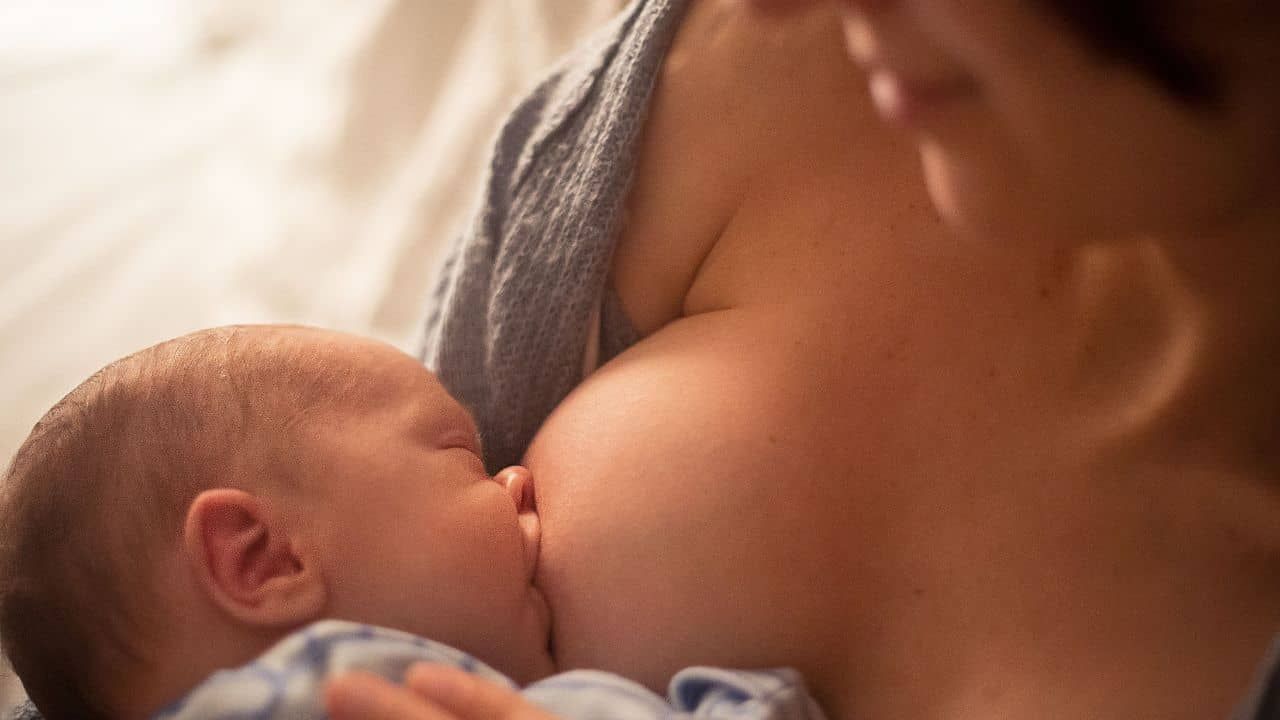The Two-Finger Trick to Make Latching Easier
If you’ve ever felt like latching when you are trying to breastfeed with large or elastic tissue is like trying to solve a Rubik’s cube blindfolded—you aren’t wrong! You know everything is supposed to go in a specific place but you have no idea how to get those pieces to line up, and even if you knew, you can't see what you are doing anyway.
It can be frustrating when your nipple points sideways, down, or just doesn’t seem to align with your baby’s mouth, because so much of the standard "how to latch" advice doesn't work for your anatomy. But don’t stress, I’ve got a super simple hack that’ll make a huge difference: the two-finger trick.
Let me show you how this little trick can make that initial latch-on feel much easier, especially if you have tricky tissue.
Use Your Baby’s Reflexes First
This latching tip is my favorite for parents with large tissue, elastic tissue, or babies that bite, chew, or slurp your nipple into their mouth. But no matter your anatomy, your baby is born with the same set of innate reflexes that help with the chestfeeding process.
If you aren’t using their reflexes to help with latching, it’s like trying to slow dance with yourself—awkward, probably a bit embarrassing if you’re in public, and definitely not winning any style points.
If you’re not familiar with a reflex-based approach to latching, check out this blog first. Once you’ve got the foundations in place, the two-finger trick will be a total game-changer for those of you with large chests, elastic tissue, or babies that are extra quick with their latch!
What’s the Two-Finger Trick?
This hack is all about positioning your nipple without messing with your whole chest tissue. Here’s how it works:
Place two fingers on your nipple—just those two fingers, nothing fancy.
Move your nipple into the right position for your baby to latch. You can move it up, down, in, or out depending on where it needs to go.
If your nipple’s pointing up (which isn’t usually a problem), gently bring it down.
If it’s pointing sideways, move it into the right spot.
If you’ve got really elastic tissue that’s a bit loose, pinch the skin and lift it with your fingers to get the nipple exactly where it needs to be to line up with your baby’s mouth.
Why Does This Work?
This works because we’re focusing on moving just the nipple into position—no need to adjust your whole chest tissue. The key is to latch your baby where your tissue naturally rests. This way, when your baby latches, you’re comfortable and hands-free.
This trick keeps everything in place without the awkwardness of holding your breast while breastfeeding—and it lets your baby use their reflexes to work with your body’s specific anatomy. And that’s what makes chestfeeding easier!
For Those Babies Who Chew or Bite the Nipple
What if your baby likes to bite, chew, or suck your nipple into their mouth? This often means they’re getting the cue to suck too soon. Here’s where the two-finger trick can save the day.
By gently lifting your nipple with your fingers, you can get it out of the way and give your baby time to gape before they latch. This gives them the right cues, buying you some extra time to help them open wide and get that deep latch you’ve been searching for.
Why It Matters: The Zip Code Baby
The goal here isn’t just a one-time fix—it’s about building a skill for both you and your baby. The two-finger trick helps you get things going while you both practice and develop those latching reflexes.
The more you practice, the less you’ll need this hack. Eventually, you’ll create what I call a zip code baby—you’ll just get them in the general area of your breast, and they’ll do the rest!
Once you’ve got the hang of this, nursing becomes much easier, and feeding will feel natural and comfortable.
There you have it! The two-finger trick is a simple but powerful way to improve latching and make your breastfeeding sessions smoother. So, the next time it's time to feed and everyone is calm, try moving your nipple just enough to set both you and your baby up for latching success.
Want More Help Like This?
I’ll let you know when I drop new guides, blogs, or tools to help feeding feel better.
No spam. Just real support, that's ready when you are.








